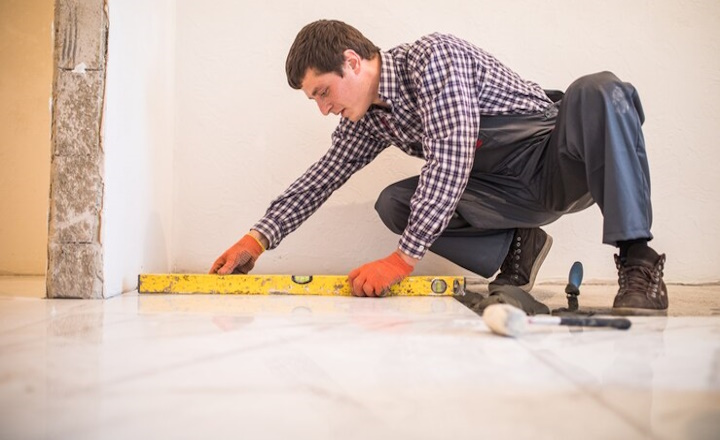
Tiles are used in homes because they are aesthetic and very durable. However, sometimes, they develop defects.
Learning how to deal with these issues, such as cracks or loose tiles, will not just save you money. It will also reduce your stress level. With the right tips and equipment, you can fix some of the following issues:
1. Cracked Tiles
Tiles experience cracks, particularly in places that receive intense pressure from foot traffic or structures that have experienced movement. One small problem may lead to something worse if not taken care of on time, hence the need to act fast. You can pry out the old tile using a chisel and scraper, clean the area, and install a new tile with appropriate adhesive.
2. Tiles Not Sticking
Dust can reside on the backing coats or adhesive or cause dampness in the cavity if your replacement tiles do not bond properly. Ensure that the surface is clean before the new adhesive is applied. This helps ensure that tile repair is properly done and lasts for years.
3. Loose Tiles
Tiles can become loose, and this can be due to various factors, like improper installation, water seepage, or general usage. If you tread on them, there is a metallic sound, which indicates that the adhesive beneath has given way. You can fix this problem by removing the tile and replacing it with new adhesive and grout.
4. Grout Problems
Grout can also deteriorate, break down, or change colour over time. This is true, especially in areas such as the bathroom or the kitchen. Crumbling grout presents an issue with appearance and waterproofing for walls and tiles. For small areas, you can use a grout saw to remove old or loose grout and apply new grout using the same colour.
5. Water Damage Behind Tiles
H2O seepage can cause movement in the floor tiling and lead to mould formation, especially in the washrooms. You must pull out the tiles and examine the wall behind for wet signs to correct this. Remove the backing board and allow the area to dry before reinstalling the tiles.
6. Tiles Popping Up
Sometimes, tiles on the floor or wall rise suddenly and unexpectedly. This is often an indication of pressure from below or poor adhesion. To avoid stressing the tiles, the subfloor must be diagrammed, a fresh coat of adhesive applied, and the tiles properly positioned.
DIY Tile Repair Tips and Tools Required
Safety comes first, so assemble the right tools and equipment before you start to work. Before applying it to a large surface, it is always important to first sample a new type of grout or adhesive in a small area. You must retain small quantities of tiles used in your initial project to be useful during future repairs. For this to work, the following are the essential tools you will need:
- Tile adhesive
- Grout and sealer
- Tile spacers
- Grout float
- Chisel and hammer
- Notched trowel
- Safety gear (gloves and goggles)
In conclusion, you can handle common tile problems without spending a lot of extra money or time. All it takes is a little more time, effort, and the right technique.
So, don’t let simple issues become complex or ruin your space and its aesthetics. Instead, fix them early with the right tools.
| < Prev | Next > |
|---|




